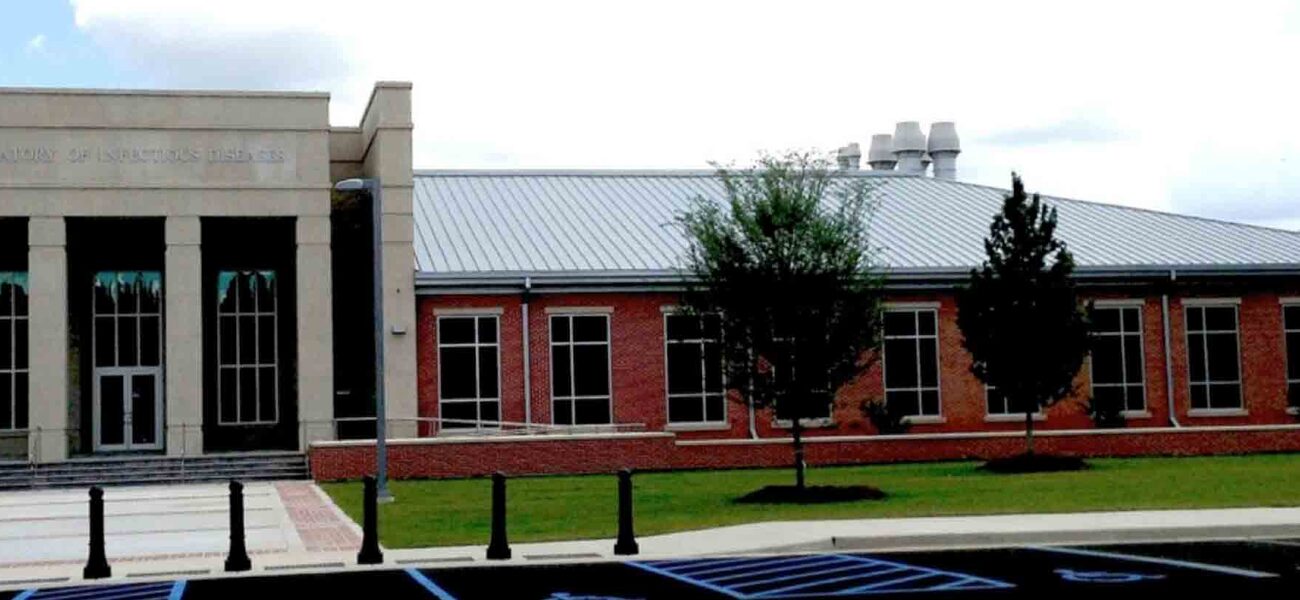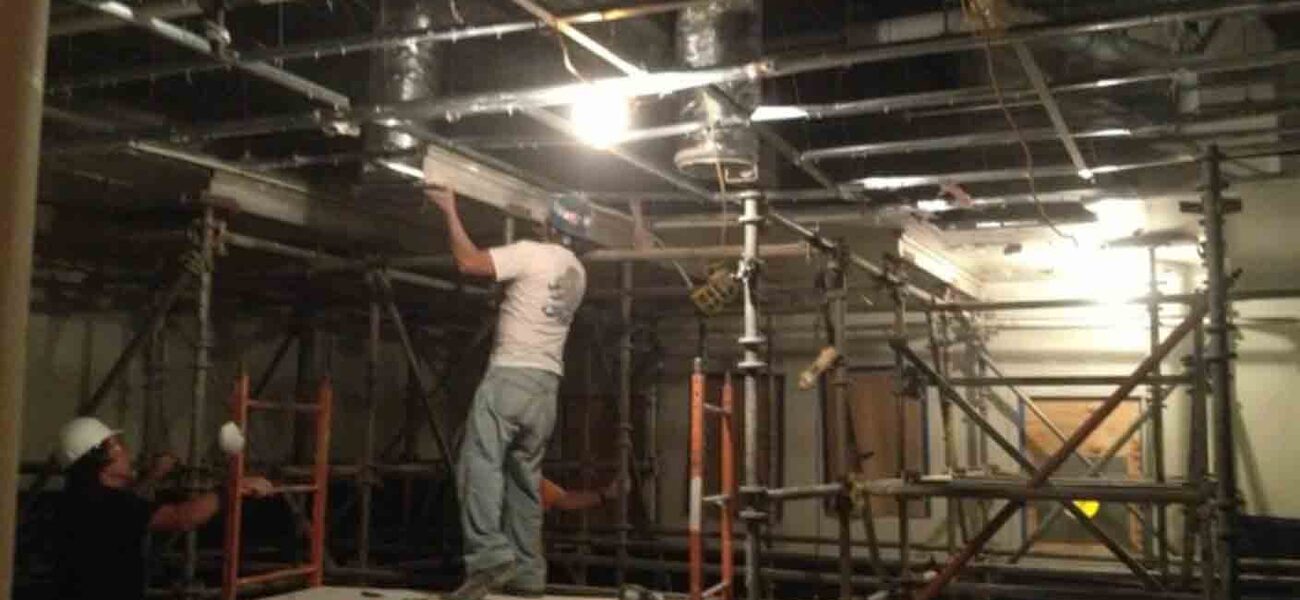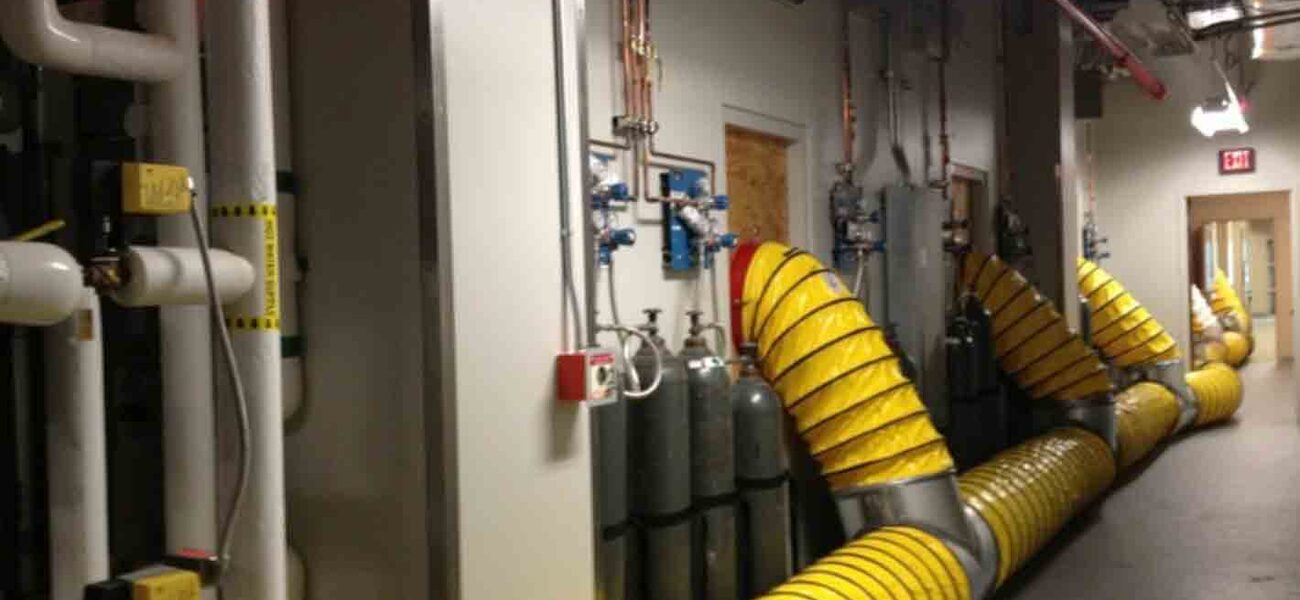Regulatory requirements for using directional airflow as the primary method of containment in BSL-3 labs is a simple concept, however the engineering and controls required for today’s facilities present an array of challenges when it comes to conducting “failure scenario” tests during commissioning and shutdown, and startup procedures during normal operations. Maintaining collaboration between the occupants, an experienced architect, and an objective third-party commissioning partner while designing or redesigning a BSL-3 lab can prevent costly delays and complications.
Centers for Disease Ccontrol requirements dictate that all BSL-3 facilities must document that, during normal operations and under failure conditions, there is no reversal of air that originates in the containment area and travels outside of the containment barrier.
“The CDC requirement that ‘airflow will not be reversed,’ has presented problems with building mechanical systems since its inception in the 5th edition of the BMBL, especially during failure scenario tests,” says architect Tiffini Lovelace, a senior technical consultant with WorkingBuildings. “It’s easy to keep inward directional airflow when the system is running under normal conditions. But when you’re shutting systems down and restarting them in a particular sequence, component reactions take time, and that’s when you can start getting air reversals.”
Construction was 95 percent complete on a new BSL-3 facility at the University of South Alabama College of Medicine when WorkingBuildings was hired to conduct independent select agent pre-certification verification. As an NIH-funded project, the facility was required to use directional airflow as the primary containment method and to be “structurally stable when subjected to maximum negative pressure.”
“Most people don’t stop to think about the effects of negative space pressure,” says Lovelace. “Part of the problem is that these facilities are designed to be more and more airtight, because it’s easier for the controls and HVAC components to maintain the pressure differential. But this wreaks havoc on the system when you are conducting failure scenario tests and restarting the systems.”
“Directional airflow, not working in a little airtight bubble, is what protects us in a BSL-3,” says Debra Sharpe, president of Sharpe Solutions International (formerly of WorkingBuildings). “But it is difficult to maintain directional airflow in something so tight.”
Failure Scenarios
Failure scenarios tested for during the commissioning process include unexpected loss of normal power, controlled outages for maintenance, control system component failures, control system network communication loss, mechanical component failures, and control sequence errors. Airflow reversals can occur in these situations when there is a loss of airflow control between spaces.
“When you are pumping more air into a space than you are taking out, that is obviously going to cause positive pressure in the space,” says Lovelace. “The issue we see most often is related to the ramping speeds of fans and variable-frequency drives. If an exhaust fan fails, it takes the supply fan a few seconds to understand that it needs to shut down. During that time, the room is going to experience a positively pressurized environment that causes a momentary reversal of air, which results in the space ‘burping’ positive.”
Ramp times are also an issue. When the exhaust fans are much smaller than supply fans, and the system components are not installed and programmed correctly, the time it takes for the supply fans to ramp up to full speed relative to the exhaust fans, even during controlled procedures, can create a negatively pressurized environment for 30 to 90 seconds. The complex relationship between built spaces, engineered systems, controls programming, and regulatory requirements makes failure of laboratory air controls very complicated to test for and requires the highest level of collaboration among all disciplines, says Lovelace.
“To satisfy NIH design requirements, everything must be fully documented and well understood by the building operators,” says Sharpe. “One issue we often see is that the BAS trending data points are not set to record small enough increments to demonstrate to the CDC that there is no reversal of airflow.”
In one instance, a bad static pressure transmitter was the culprit.
“In that case, the BAS ramped down the exhaust fans as expected,” says Lovelace. “But the supply fans didn’t recognize it, so they just kept churning out air like there was nothing going on, which over-pressurized the room, raising the suspended ceiling system 2½ inches and damaging lab gas piping that penetrated the ceiling. It would have kept it positively pressurized indefinitely, because only an exhaust fan failure alarm was logged, with all other operating conditions showing normal according to the BAS. Obviously, there was a problem with the system components and controls. But the most concerning issue was that the BAS said everything was fine. We were able to identify that the BAS was not set up to read differential pressures at the appropriate locations. It ended up being a good way to commission the BAS, as well.”
Structurally Framed Ceilings
Despite common design practice that favors suspended ceilings, Lovelace strongly encourages using structurally framed ceilings for all BSL-3 labs.
“This unfortunately happens in almost every BSL-3 lab we see,” says Lovelace. “Gypsum board hanging from wires makes sense, because it is supposed to be under constant negative pressure during normal operations, and these systems work well in tension. But the room is going to experience multiple forces—both positive and negative—when it’s being tested, and during controlled shut-down and start-up procedures. And when the room goes positive, air pushes up the grid holding the gypsum board. Then when the system starts back up, within seconds the space goes from positive to negative and jerks the ceiling back down. In many facilities this has resulted in suspended ceiling systems hanging more than an inch lower than originally installed, and is evident in damage to the structural clips supporting the suspension wires.”
Upon repetition, this stress can cause a suspended ceiling’s components to fail, as it did at the University of South Alabama when the controls contractor, while programming the system, conducted one controlled shutdown too many, and the ceiling came down in one of the isolation labs and was severely damaged in others right before the building was set to be operational.
“Of course, having a structurally framed ceiling doesn’t make up for your controls not working properly, or for not having static-pressure sensors in the ducts that will shut a fan down or lower its exhaust rate if the system gets into problems,” says Lovelace. “It also doesn’t change the fact that when we build these labs so tight, we have to give the air somewhere to go. If you allow for a leaky lab, which has always been the intention of directional airflow within a BSL-3 lab, you are going to have fewer problems when you start doing shutdowns. The key is to know exactly where these leaks occur within the lab and have the ability to seal them prior to gaseous decontamination of the space.”
According to Lovelace, other design measures that help reduce ceiling stress include appropriately sized undercuts at doors, and using drop sweeps or door seals only if required for specific environments (a typical CDC BSL-3 laboratory does not require these), or installing passive air inlets in the wall that allow for adjusting air balance between spaces and act as a pressure relief valve during high-differential pressure scenarios.
The Cost of Failure
The University of South Alabama received a $14 million NIH grant—the largest competitive grant of its kind ever awarded to the University—in February 2010, and was given five years to make the facility operational. Substantial completion was declared in April 2013, with occupancy slated for September 2013. Then the ceiling collapsed during testing in August.
“Everything was ready to go at that point,” says Dr. David Wood, professor and chair of the Department of Microbiology and Immunology at the University of South Alabama. “We were training on the systems, starting to run the autoclaves, and developing our SOPs, so everything had to be covered—all the vents, all the autoclaves, all the biosafety cabinets. We had 30 of those that had to be wrapped up.”
Wood estimates that the direct cost of the ceiling failure was almost $1 million for the redesign and construction alone, plus the intangible costs related to delays in grants for other faculty members, difficulty recruiting new faculty, and warranty expirations.
Lessons Learned
One of the biggest lessons learned in this instance was the importance of having an independent commissioning team that is involved from the outset and answerable to the users.
“Every organization is different,” says Wood. “And everyone has to deal with their own political systems. But it’s very important to hire an independent commissioning team that is familiar with the challenges of building a modern BSL-3 facility. And that needs to happen at the very beginning of the design process. If we could go back and do things over, that’s the first thing we’d do differently.”
“It also helps if you can get the commissioning agent in there with the controls contractor and the design team during the commissioning process,” says Lovelace. “Then you can actually talk through the failures you are going to reenact, the process you’re going to follow, and how you expect everything to start back up. That allows you to tinker with the controls before you actually go into your shutdowns and hopefully reduce any potential damage or surprises.”
Sharpe also emphasizes the importance of having good team dynamics.
“You need to make sure that your commissioning team doesn’t have a problem butting heads with either the architect or the construction manager,” she says. “Many times they are going to have to tell the architect and construction manager things they don’t want to hear, and, when you have poor team dynamics, it really compounds the issue.”
By Johnathon Allen
This report is based on a presentation by Lovelace, Sharpe, and Wood at Tradeline’s International Biocontainment Facilities 2014 conference.



